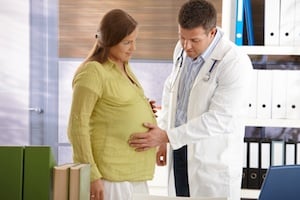We are experiencing a very high volume of calls and messages and ask for your patience. We will answer your portal messages within 48 hours.
We are experiencing a very high volume of calls and messages and ask for your patience. We will answer your portal messages within 48 hours.

A paper published today in the New England Journal of Medicine noted an increased incidence of birth defects in ART-conceived children (Davies MJ et al. Reproductive technologies and the risk of birth defects. N Engl J Med 2012:doi10.1056 /NEJMoa 1008095).
This interesting paper confirms what previous studies have already reported. There is an increased risk of birth defects among births conceived with assisted reproductive technologies as compared to spontaneous conceptions. With detailed statistical analyses (multivariate adjustment) the association between IVF and the risk of any birth defect was no longer significant, but remained so with ICSI.
What makes this study special is the fact that it involved a single large population in South Australia. Davies et al. analyzed more than 300,000 births and terminations of pregnancy from 1986 - 2002. The found that risk of any birth defect was significantly higher among births resulting from assisted conception than among spontaneous births for singleton births (unadjusted odds ratio, 1.43; 95% CI, 1.26 to 1.62) but not for twins. Women in the assisted-conception group were also more likely to have a stillbirth and to deliver by cesarean section and at a gestation of less than 37 weeks or less than 32 weeks and were less likely to have a male singleton. In addition, their children had a lower mean birth weight than the children of women in the spontaneous-conception group. However, the relative risk of birth defects associated with assisted conception did not differ significantly between singletons and twins (P=0.44).
The kind of birth defects increased with assisted reproduction included cardiovascular, musculoskeletal, urogenital, and gastrointestinal abnormalities and cerebral palsy. For multiple births, the only defect category for which there was a significantly increased risk was respiratory defects, whereas for singleton births, there were significant associations between the use of assisted reproductive technology and risks of multiple defects, congenital abnormalities, cardiovascular defects, musculoskeletal defects, urogenital defects, and cerebral palsy. There were no significant associations between assisted conception and the risk of any recorded syndrome (Down's, Edwards's, Patau's, Pierre Robin's, Turner's, or Klinefelter's syndromes), although these conditions were rare.
Of interest is the fact that less invasive techniques like ovulation induction with clomiphene citrate, intrauterine insemination was also associated with an increased risk of any birth defect (adjusted odds ratio, 1.24; 95% CI, 1.08 to 1.43).
Even spontaneous conception in women with a history of infertility were also associated with an increased overall risk of any birth defect, even after adjustment for confounders (adjusted odds ratio, 1.25; 95% CI, 1.01 to 1.56). A history of infertility without any treatment with assisted reproductive technology was associated with a similar, albeit borderline, significant increase in risk (odds ratio, 1.29; 95% CI, 0.99 to 1.68).
Linda Giudice MD, PhD, President-elect of the American Society for Reproductive Medicine (ASRM) responded: “This study confirms what has been known for quite some time: Patients who need medical assistance to conceive have a somewhat higher risk of having children with birth defects than parents able to conceive on their own. Patients considering medically assisted conception have been, and should continue to be, counseled on those risks prior to undergoing any treatment.”
Glenn Schattman, MD, President of the Society for Assisted Reproductive Technology (SART) said: “It is important to note that women with a history of infertility who did not undergo ART treatments also had a higher increase of having children with birth defects. This combined with the finding that those using ICSI (Intra Cytoplasmic Sperm Injection) also had slightly elevated risks of birth defects suggest that the underlying problem that led them to seek medical assistance in the first place is likely contributing to the elevated risk of birth defects in their children. These are interesting and important findings and we will need much more research to allow us to help patients overcome their infertility with treatments that are as safe as possible for them and the children born from the treatments.”
When one compares children born to infertile couples (i.e. couples with problems of the reproductive system) with fertile couples (who do not have these problems), it is like comparing apples and oranges. It is therefore not surprising that the infertile group has children that will not do as well as their fertile counterparts. This increase in birth defects is not only with IVF and ICSI, or with clomiphene citrate and intrauterine inseminations, but also with spontaneous conception in this group of patients! This indicates that the increase may be due to problems with the reproductive system in these patients and NOT with the technology used to help them conceive.

Entire Website © 2003 - 2020
Karande and Associates d/b/a InVia
Fertility Specialists
